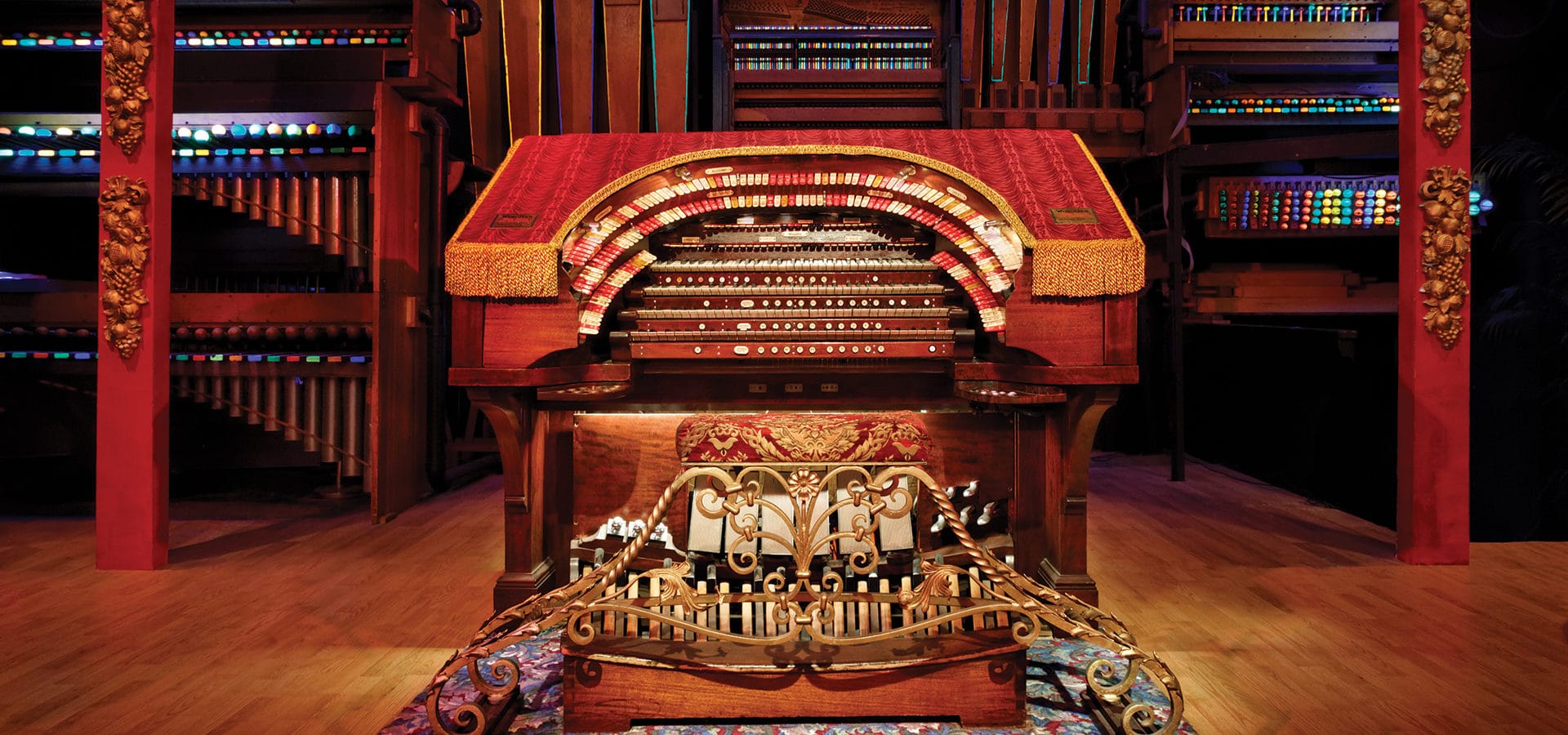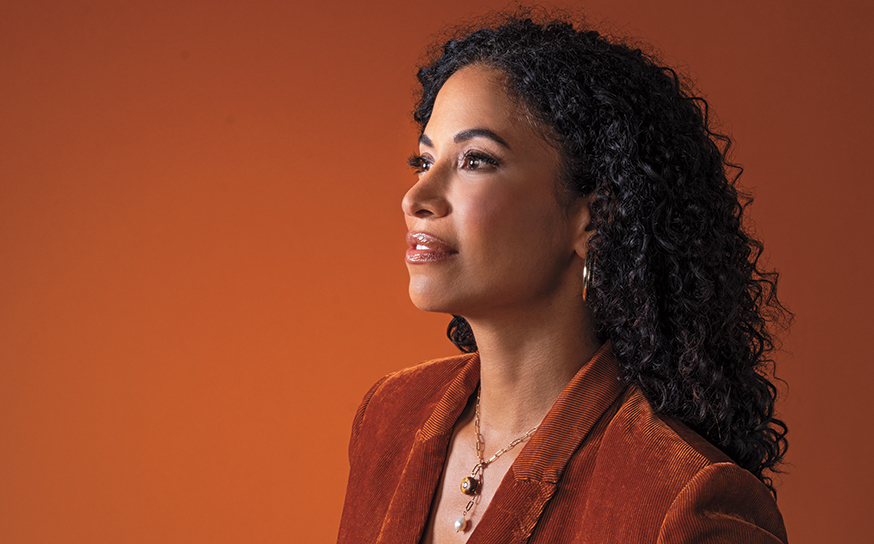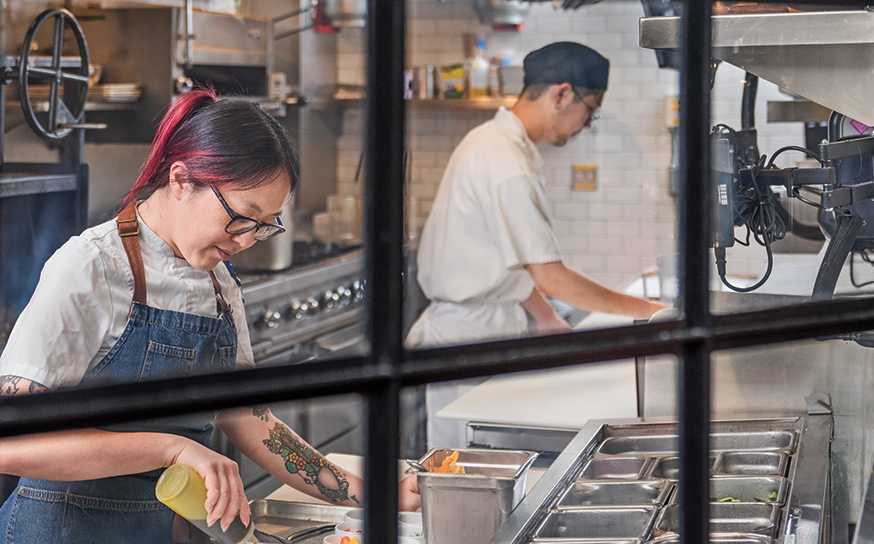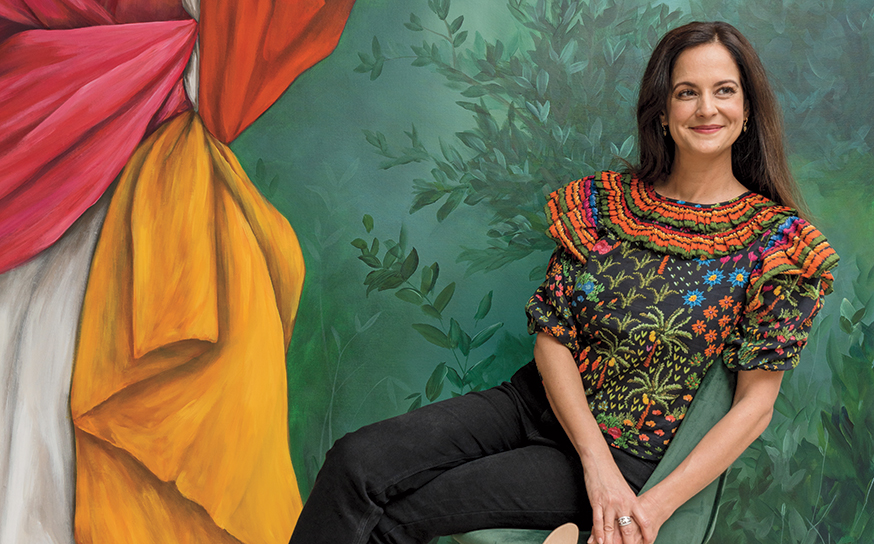El Segundo’s Old Town Music Hall Brings to Life the Sights and Sounds of the Silent Movie Era
A pipe dream come true.
- CategoryPeople
- Written byColleen Farrell
During a showing of the 1925 American epic adventure-drama Ben Hur, an older couple sat in the back of El Segundo’s Old Town Music Hall theatre, riveted to the film. During one scene, set in Egypt, a lady onscreen gently tickled the harp. The man leaned into his wife to whisper, “My, she plays well, doesn’t she?”
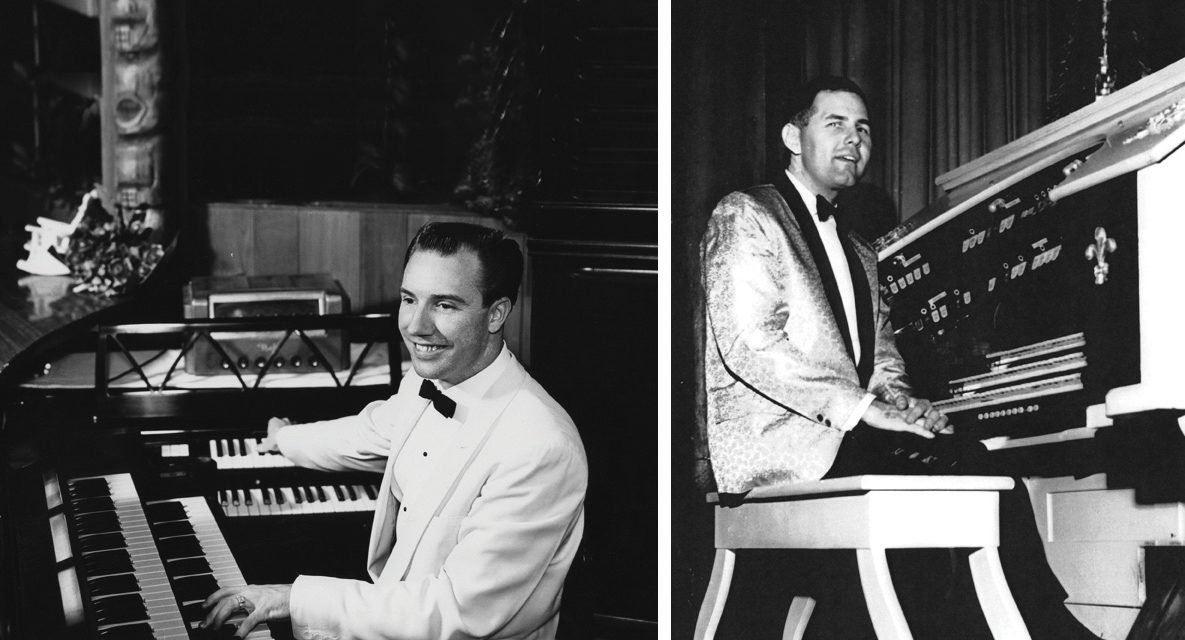
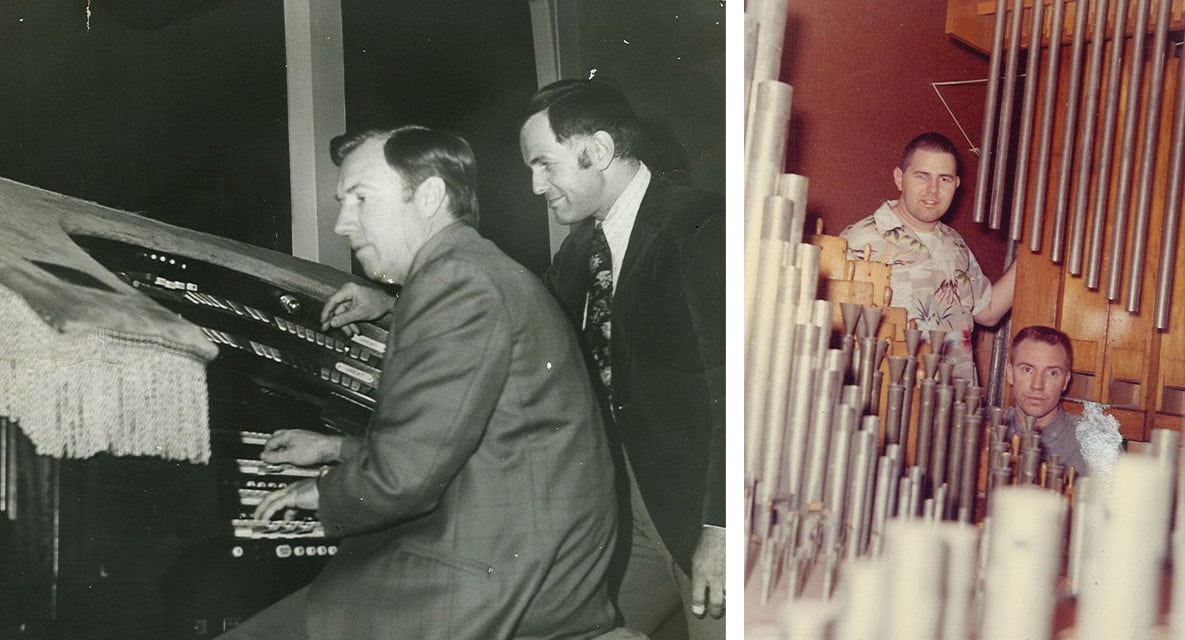
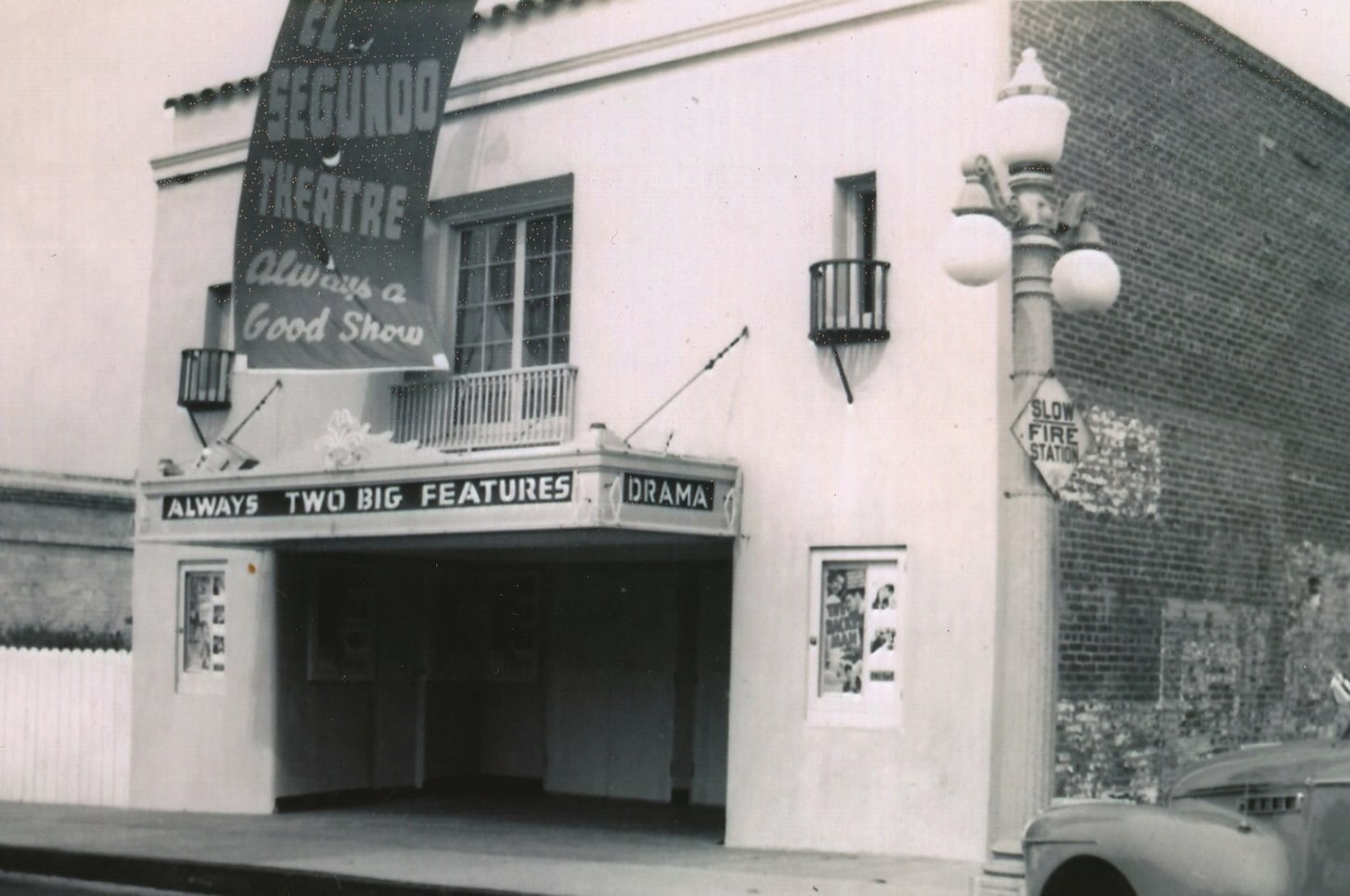
The story, overheard and shared with theatre manager Bill Field, amused him to the point of laughing out loud. The man didn’t realize it was actually Bill who was at that moment creating the heavenly melody—as well as the entire array of the film’s music and sound effects—playing a 1925 Mighty Wurlitzer theatre pipe organ placed just below the screen. The instrument is a distinctive type of pipe organ originally developed to provide music and sound effects to accompany silent films during the first three decades of the 20th century until talkies came onto the scene in 1927.
“It’s a wonderful instrument that’s completely acoustic. There are no electronics of any kind,” Bill said. “It’s natural and air-driven, and it’s orchestral. And, of course, it has all of the attachments that are used to accompany silent films.”
There were more than 7,000 such organs installed in theatres in America and around the world from 1915 to 1933. The organs feature a distinctive horseshoe-shape arrangement of stop tabs (tongue-shaped switches that admit pressurized air to a set of organ pipes) above and around the instrument’s keyboards on their consoles. While a 10-horsepower blower charges the organ—including its 3,000 pipes—Bill would control each chord, chime and whistle with his hands to create a precisely synchronized soundtrack for the film.
Today fewer than 40 of the instruments remain in their original venues. Some have been rescued in defunct theatres and installed in public venues. Many more exist in private residences.
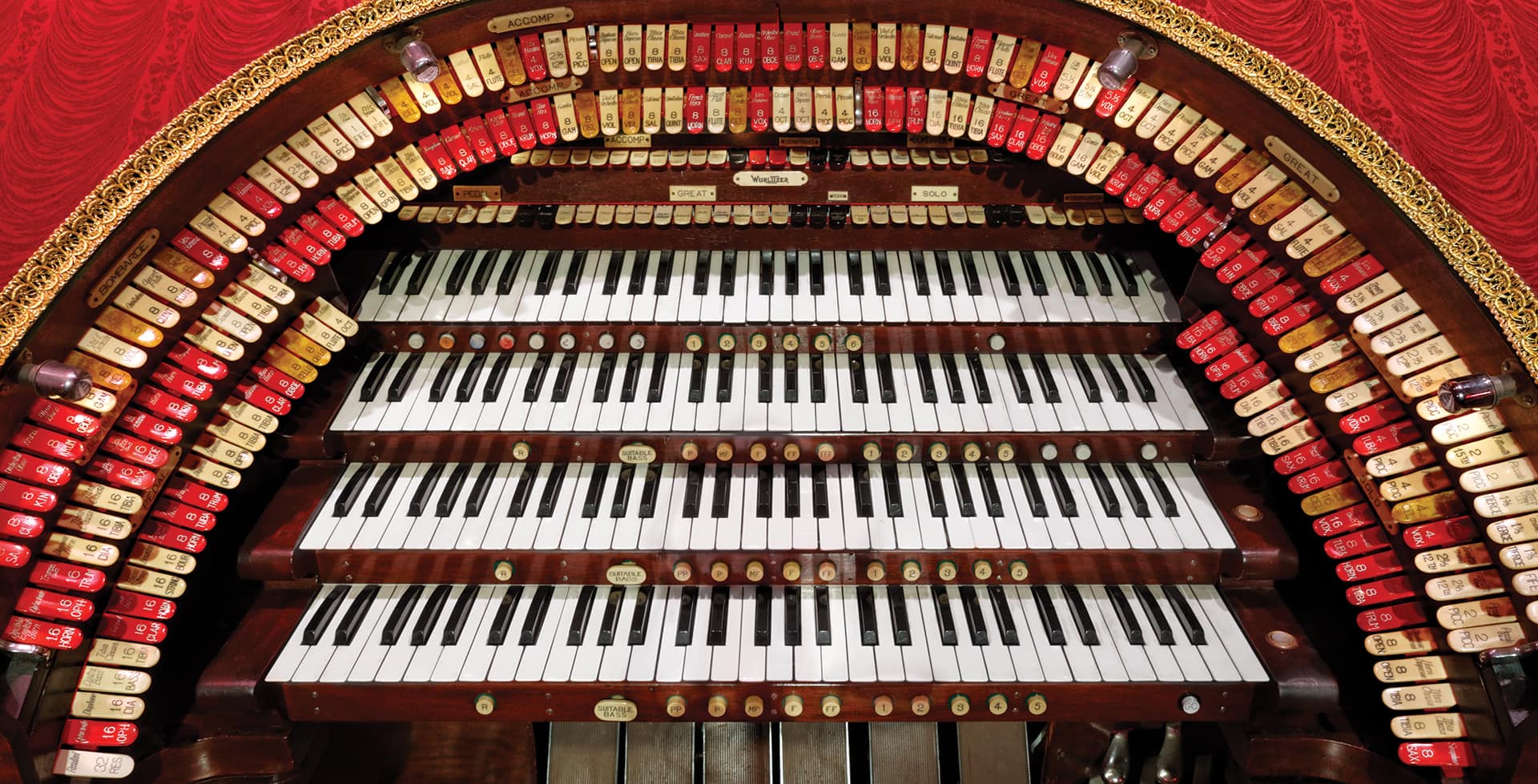
In the late 1950s, Bill and fellow musician Bill Coffman, nicknamed “the two Bills,” set their minds on acquiring one such instrument. They seized the opportunity to purchase one for sale from the Fox West Coast Theatre in Long Beach. It was the largest and most intact of any they had come across.
“We wanted to preserve the organ,” said Bill F, who passed away on June 29 at age 80, shortly after being interviewed for this story. “And we also wanted to bring the music that was played on the organs from the early 1900s to 1950 and present it to the public and educate young people to see what it was like when these were popular in the theatres.”
The two Bills made plans to install the organ in the quaint El Segundo Theatre, built in 1921. Before the installation, Bill C. took a job in Panama and was awestruck by a Wurlitzer he saw at the Panama Hilton. The organ was under glass, and its various components were painted with fluorescent paint, which glows under a black light. It inspired Bill C. to suggest they do the same with their organ. Bill F. agreed.
So instead of the typical setup that hides the organ’s percussion instruments—including drums, cymbals, xylophone and marimba—behind walls and curtains, the installation resulted in their animated display with colorful lights and sounds when the curtains opened. “It was a big success,” Bill F. shared.
The two Bills partnered to transform the theatre and recreate the experience of going to the movies in the 1920s. They acquired curtains, seats, artwork and ornate chandeliers from other defunct theatres in the area, including the Fox and the Manchester.
When the theatre first reopened in 1968 under the new name Old Town Music Hall, musicals were the most popular genre among the venue’s older crowd of attendees. But as times changed, the two Bills added mysteries, silents and comedies to the mix—drawing audiences of all ages.
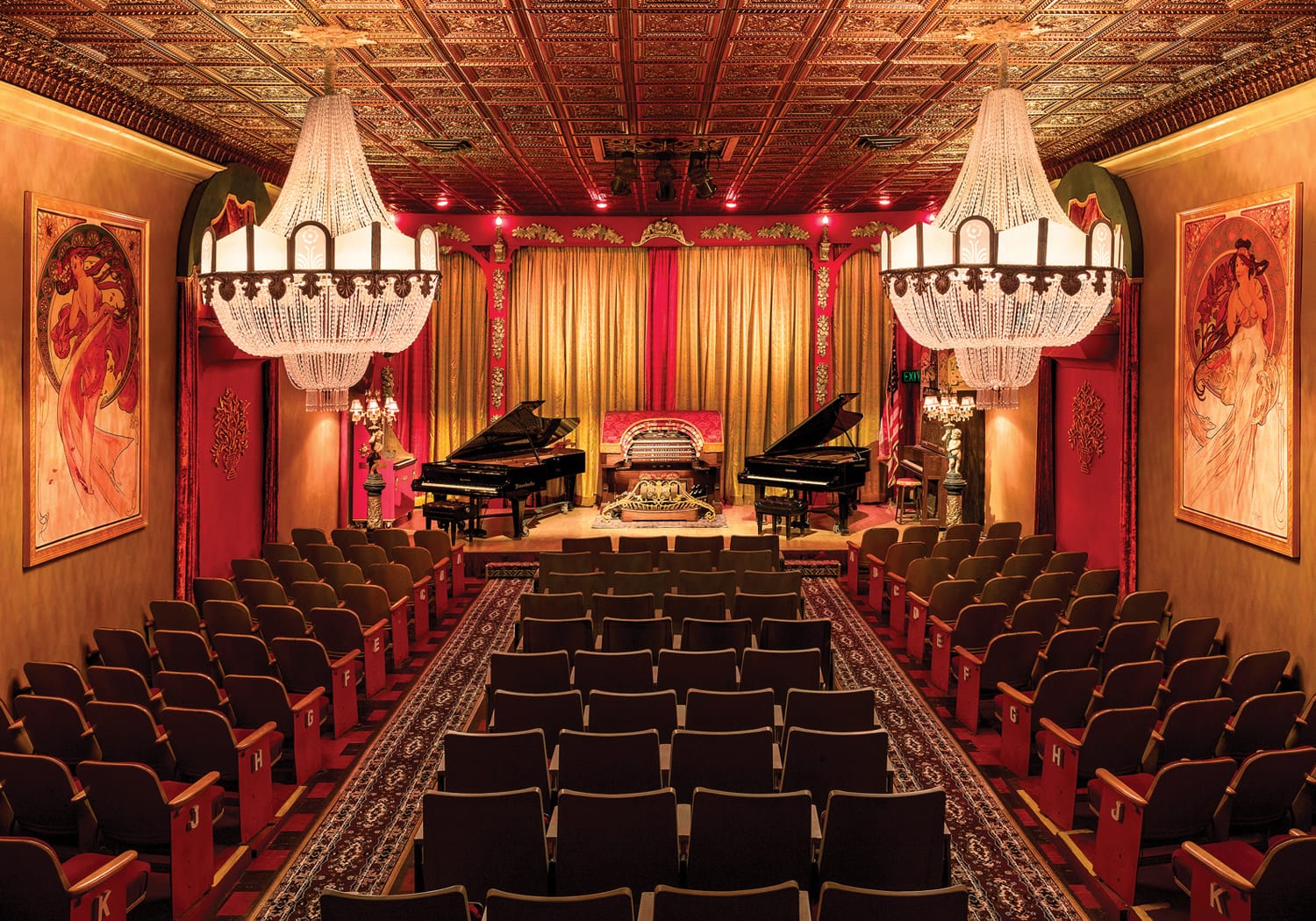
This also allowed Bill F. to display his improvisational musical talent. Although he possessed an obvious gift for delivering a well-timed horn honk as Laurel and Hardy narrowly miss a head-on collision, he dismissively asserted that with practice, the organ is easier to play than the piano.
Bill F. learned to play piano as a child but fell in love with the organ in grammar school. During shopping trips with his grandmother to Barker Bros. department store in Downtown Los Angeles, he enjoyed concerts played on the store’s large pipe organ. When he graduated from grammar school, his mother bought him a Hammond organ. He got his professional start playing for audiences before shows at the Los Angeles Theatre, a movie palace in Downtown Los Angeles.
At Old Town Music Hall, the Bills took turns playing the organ at performances while the other would run lights and projection. Business continued following Bill C.’s passing in 2001. Due to his health challenges, Bill F. began transferring the proverbial keys over to a 24-year-old self-admitted “old soul” named Edward Torres. For Edward, who began visiting the theatre at age 14 and had been learning to play the piano since age 8, meeting Bill F. was like meeting a celebrity.
“He was very, very kind, welcoming and friendly,” Edward says. “I just kept coming back, and they haven’t been able to get rid of me since.”
After celebrating his 15th birthday with a party at the theatre, Edward began taking organ lessons from Tony Wilson, a friend of Bill F.’s, every Saturday morning at the theatre. Meanwhile, Bill also mentored Edward on the art of playing theatre organ.
After filling in for Bill when he was out of town, Edward began taking on more of the playing and management responsibilities of the theatre, while also teaching piano to children through the Los Angeles Department of Recreation and Parks. Playing at the Old Town Music Hall has led to other gigs, including the Paramount Iceland skating rink and the Bob Baker Marionette Theater in Highland Park.
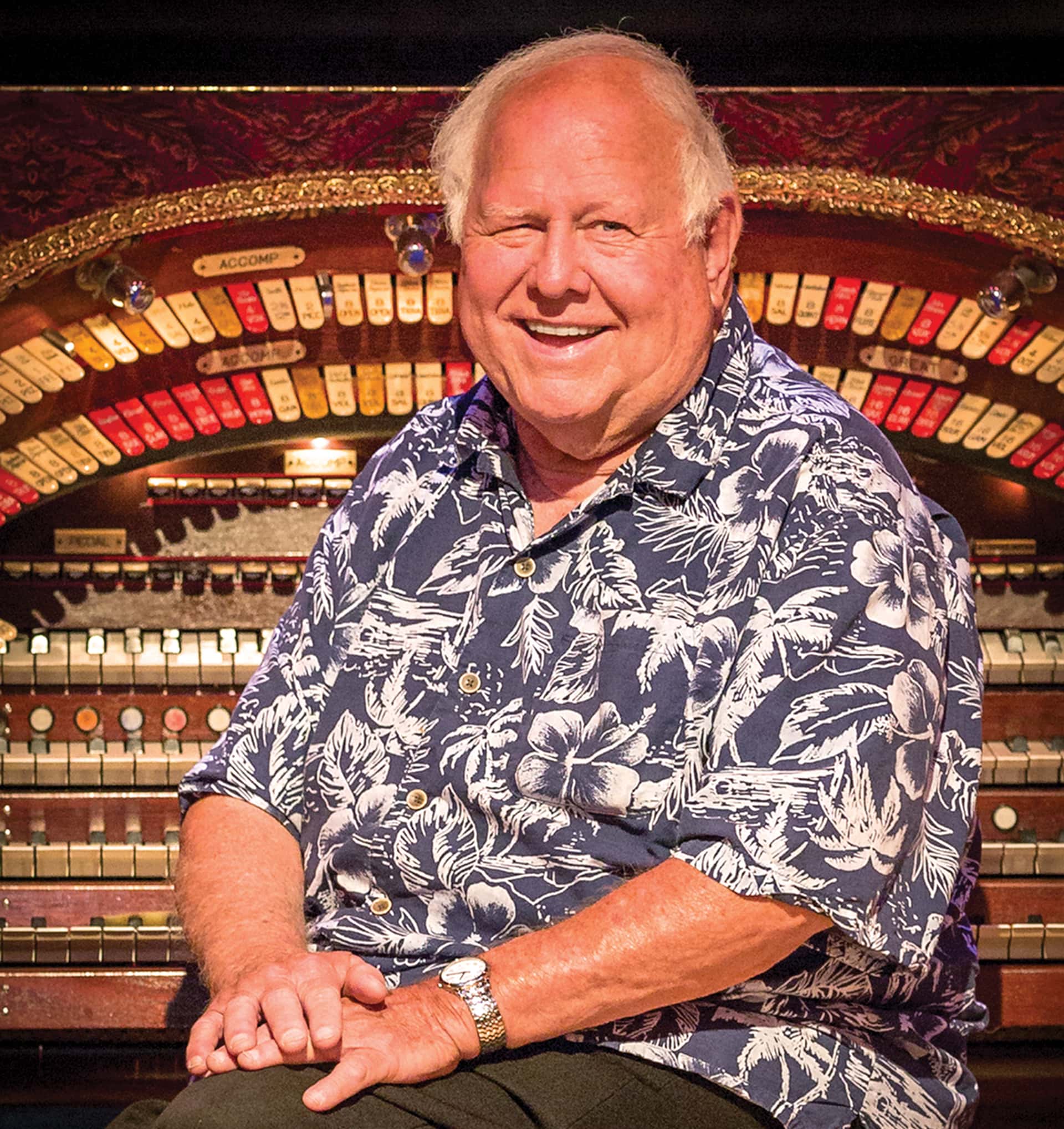
Bill Field
Guests of Old Town Music Hall are treated to an immersive 1920s entertainment experience that includes a preshow medley followed by a sing-along featuring classics such as “It Had to Be You,” “Five Foot Two, Eyes of Blue” and “Jeepers Creepers.” A short comedy precedes the feature film. Audience members can nibble on favorites from the snack bar, including popcorn, Hershey’s bars and its best seller: freshly baked coconut macaroons made by Porto’s Bakery in Downey. Sundays at the theatre feature live concerts of popular music, jazz and ragtime.
Because the building’s owner rents the theatre, keeping it open is an ongoing challenge. In 1991 the theatre received 501 (c)(3) nonprofit status—paving the way for fundraising, which has helped with upgrades and operating costs. Backed by a team of supporters and volunteers, the theatre launched a major fundraising campaign to help sustain it through the COVID-19 shutdown.
Edward hopes the show will be able to go on in time to celebrate the building’s 100th anniversary in 2021. He hosted Facebook Live shows with Bill F. and plans to host more. The goal is to resume annual events, such as its Ragtime Festival—the longest-running of its kind in the world—and Halloween and Christmas film festivals, which Edward says bring people from “far and wide.”
“There’s no one else in Los Angeles doing what we’re doing,” he shares. “I think it’s important to preserve that tradition and present it for generations to come to make sure it’s not something that’s lost to time.”






